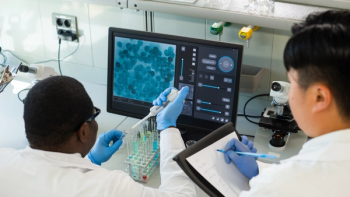
How eTMFs Are Transforming the Pharma Industry
A significant change is under way as the industry shifts from passive to active trial master file (TMF) management, writes Rik van Mol.
A 2016
There is also an emerging gulf emerge between those organizations that use data to drive efficiencies and those that do not have the capability to access critical trial information due to outdated systems and practices.
First, we need to understand why TMF processes are so important. Regulatory agencies are demanding higher levels of access to TMF processes, and at the same time life sciences companies need ways to make the TMF process more efficient.
These dual challenges have helped build the business case for eTMF processes. An active eTMF gives regulators access to up-to-date trial data to check on Good Clinical Practices (GCP) compliance, as well as improving productivity and providing valuable performance insight on which life sciences executives can base business decisions.
Passive TMFs involve out-of-date, paper-based processes, even if documents are saved in electronic format, and these are often saved loosely in multiple locations and users cannot track progress. Conversely, with active TMF management, purpose-built eTMF applications manage documents and processes in real time as the TMF is being generated. Documents are created, reviewed, and acted upon in one system that is accessed by all study partners.
The current state of TMFs in 2016
The 2016 Paperless TMF Survey1 finds that organizations are improving their ability to respond to regulatory requirements, although as an industry we have a long way to go. According to our survey, the vast majority (80%) of sponsors using eTMF applications now provide remote access to inspectors and auditors, or plan to do so in the coming 12 months.
Improving inspection readiness (67%) and speeding study start-up (53%) are the two most cited business benefits driving eTMF adoption among sponsors. We are in a period of maturation when paper-based practices are disappearing and digitized practices are ascending. Our survey reveals that the maturity of TMF processes varies widely from passive TMF management to more advanced active TMF processes. In a move to go paperless, almost half (49%) of sponsors say integrating their eTMF applications with their clinical trial management systems (CTMS) is key.
Sponsors are a key driver in the move to the adoption of eTMF processes. Sponsors’ adoption of advanced eTMF applications increased nearly twofold in the last two years to 24%. Sponsors using local file systems as their eTMFs dropped from 26% in 2014 to just 8% today. Over the same period, clinical operations departments cut the use of paper for most or all TMF documents from 41% to 28%. Since our first survey in 2014, we have also recorded declines in the use of paper in regulatory processes (down 12%), drug safety (down 11%), and data management (down 6%).
The study finds that nearly one in four (23%) sponsors now use their eTMF applications to share documents with contract research organizations (CROs). This was up from 14% from 2014, representing steady progress in digital collaboration.
While paper is steadily being removed from the process, there remains a challenge when it comes to using digital/electronic signatures. Nearly two-thirds (61%) of respondents report that digital/electronic signatures are currently lacking from their processes.
Using data to improve processes
The pharma industry is benefiting from the increased access to data and making strategic decisions based on it. Our study finds that organizations that have already adopted eTMF applications report better visibility into performance metrics (55%). In addition, those organizations using metrics to improve trial processes see far greater benefits compared to those not currently collecting data. These include:
- Improved audit and inspection readiness (67% compared to 29%)
- Better visibility into performance metrics (53% compared to 14%)
- Cost savings (47% compared to 10%)
Metrics also play a critical role in speeding up time to market during the trial process. Respondents using eTMFs and metrics diligently experience other advantages over those not collecting data, such as faster study start-up time (20% compared to 5%) and shortened clinical trial time (23% compared to 5%).
There remains an opportunity to use data more effectively in eTMF processes. Despite the clear benefits offered by increased access to data, we observe that TMF owners’ use of operational metrics remains flat. The number of respondents who are “extensively using data” grew from 14% to 18% in the last year.
Using an eTMF is becoming a natural part of the clinical trial process workflow, which ensures that study findings are reported as they happen and status reporting is more accurate and effortless. Real-time insight into trial progress allows the entire team to collect data throughout studies and use that data to make better decisions about commercial strategy and therapy effectiveness.
Benefits of active eTMF
As the 2016 survey indicates, an active eTMF process helps organizations to meet regulatory requirements and efficiency objectives. The four biggest benefits include:
1. Continual inspection readiness and accessibility
Regulators such as the European Medicines Agency and Medicines & Healthcare Products Regulatory Agency (MHRA) expect, at a minimum, that an organization’s TMF accurately reconstructs how a clinical trial was conducted to demonstrate effective sponsor oversight, support decisions made, and comply with GCP guidelines.
The MHRA also increased the minimum expectation to have the TMF readily available at all times, and it must be accessible and complete. This is proving a struggle for many organizations, despite the technology options available to them.
MHRA data states that 35% of 2014 site inspections were delayed due to incomplete or unavailable TMFs2. Its latest report3 cites two organizations as producing inadequate TMFs, and in one case, “there was no single system that was designed to be the eTMF with the appropriate functionality.”
2. Comprehensive trial documentation
eTMFs eliminate the issue of incomplete or missing documents, a major quality-control frustration for the MHRA. Purpose-built eTMFs enable a single source of truth across all parties to ensure all documents are up to date and stored in a single location.
3. Easy navigation with intuitive user interfaces
Regulatory agencies typically recommend that their inspectors can navigate a sponsor’s eTMF after no more than one hour of training. A familiar, consumer web-like user interface allows for quick training and simple navigation.
4. Rich insight to improve operational efficiency
Purpose-built eTMF systems capture process- and quality-specific data as the trial is being conducted. Real-time reporting and dashboards leverage this information to provide organizations with an in-process view of the trial.
Active eTMFs enable life sciences organizations to take advantage of these capabilities.
The world is changing – are you?
As the survey proves, the industry is transitioning away from paper and seeking a competitive advantage through active eTMF processes. Cloud-based solutions in particular help support the paperless environment, as they provide access and collaboration for multiple stakeholders, wherever they are, whenever they need it during the lifecycle of the trial.
The business case for deploying active eTMF processes is clear: Businesses that adopt eTMFs report smoother regulatory compliance and improved operational efficiencies. The challenge for pharmaceutical executives is how to transition their organizations, and it starts with buy-in from the C-suite. It’s not an IT issue; it’s a business decision. There must be willingness to adopt cloud-based eTMF solutions.
Over time, data-driven trial optimization will result in more efficient trials and faster time to market. If your organization is yet to transition to active eTMF processes, don’t fall behind. Now is the perfect time to start.
About the Author
Sources
1.
2. Viglya, as posted on the UK MHRA web site. For more:
3. GCP Inspections Report (April 2016)
Newsletter
Lead with insight with the Pharmaceutical Executive newsletter, featuring strategic analysis, leadership trends, and market intelligence for biopharma decision-makers.




